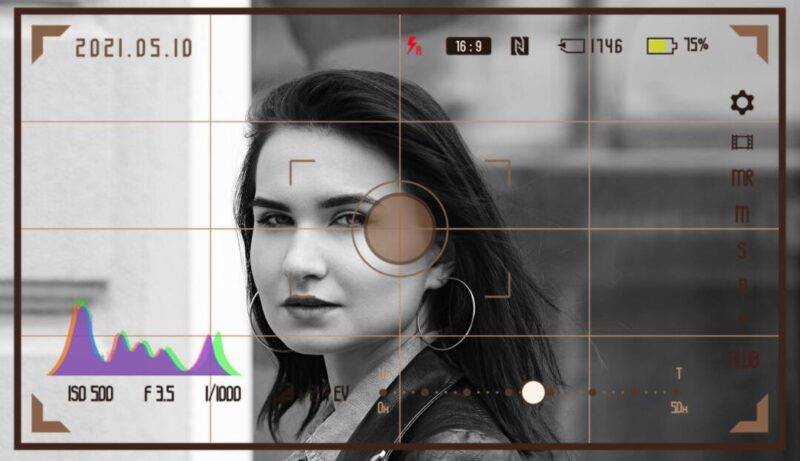Last Updated on June 17, 2023 by PixelPluck
If you are new to photography, understanding the different camera focus modes can be confusing. The camera focus modes determine which area of the image is in focus. There are various settings available that will help you capture the perfect shot. In this article, we will explain the different focus modes and how to use them correctly. With a little bit of practice, you will be able to master the art of camera focus. Camera Focus Modes Explained for Beginners.
Achieving precise focus is crucial in photography. It can make the difference between a captivating image and a missed opportunity. Fortunately, modern cameras offer various focus modes to cater to different shooting scenarios and creative preferences. In this blog post, we will explore the different focus modes available on cameras and learn how to harness their power to capture stunning, well-focused photographs.

Single Autofocus (AF-S)
The Single Autofocus mode, often denoted as AF-S, is ideal for static subjects. When you half-press the shutter button, the camera focuses on your subject and locks the focus until you capture the image. This mode is great for portraits, still-life, and still-life photography, where you want precise control over the focus point.
The AF-S mode is also great for situations where you need to capture a scene quickly, as it focuses on the subject and locks the focus immediately. It also offers a great deal of accuracy, as you can set the focus point precisely where you want it to be. The AF-S mode can be used with any lens, but it works best with lenses that have an autofocus motor built into them. It is also important to remember that when using this mode, you may need to adjust the autofocus settings to ensure that the camera is focusing on the correct area of the scene. Overall, the AF-S mode is a great choice for photographers who need precise control over the focus point and who need to capture the scene quickly.
Continuous Autofocus (AF-C)
Continuous Autofocus, or AF-C, is designed for capturing moving subjects. In this mode, the camera constantly adjusts the focus to keep your subject sharp as it moves within the frame. AF-C is particularly useful for sports, wildlife, and any situation where your subject is in motion. To use AF-C effectively, track your subject by keeping it within the active focus point(s) and maintaining a steady aim.
When shooting in AF-C mode, it is important to keep the shutter speed fast enough to freeze the action of the subject. This will ensure that the photos are sharp and in focus. Additionally, try to use a lens with a wide enough aperture to allow for a faster shutter speed and a shallow depth of field. A good rule of thumb is to use a shutter speed that is at least double your focal length. Finally, for best results, use a tripod or monopod to ensure that your camera remains steady and your shots remain sharp. With these tips, you will be able to take stunning photos of moving subjects in AF-C mode.
Automatic Autofocus (AF-A)
The Automatic Autofocus mode, or AF-A, combines the benefits of AF-S and AF-C. This mode allows the camera to automatically switch between Single Autofocus and Continuous Autofocus, depending on the subject’s movement. AF-A can be a versatile option when shooting unpredictable subjects or in situations where you want the camera to make the focusing decision for you.
The AF-A mode is a great choice for photographers who want to capture fast-paced action shots. It’s fast, accurate, and easy to use as the camera will automatically switch between AF-S and AF-C depending on the situation. Additionally, it helps to reduce the chances of blur and missed shots due to incorrect focus. Furthermore, this mode is especially useful for shooting in low-light conditions, as the camera can still accurately focus on the subject even in these challenging environments. Lastly, this mode can also be used to capture more delicate moments, such as portraits, as it can switch to single autofocus when needed to ensure that the subject is in focus. All in all, the AF-A mode is a great choice for any photographer looking for a versatile and reliable focusing system.
Manual Focus (MF)
Manual Focus gives you complete control over the focus point. This mode is perfect for situations where autofocus may struggle, such as low-light conditions or when capturing subjects with low contrast. To use manual focus effectively, adjust the focus ring on your lens until the subject appears sharp in the viewfinder or on the camera’s display. Manual focus is often preferred by macro photographers and those who want precise control over the plane of focus.
Manual focus is a great way to ensure that you get the shot you want without any surprises. It also allows you to take advantage of the lens’s sweet spot and can be used to create beautiful bokeh in your images. Additionally, manual focus is great for capturing fast-moving subjects since you can quickly adjust the focus point with the lens. It’s also helpful for capturing multiple subjects in a single frame since you can adjust the focus point between them. With practice and patience, manual focus can be a great tool in your photography arsenal to help you create stunning images.
Selecting Focus Points
Most cameras offer the flexibility to choose specific focus points manually. This feature allows you to control where the camera focuses within the frame. Depending on your camera model, you can select a single focus point or use a group of focus points. By selecting the appropriate focus point(s), you can ensure precise focus on your subject or a specific area of interest.
This feature is especially useful when shooting in challenging lighting conditions or when the subject is in motion. Manual focus points also allow for greater creative control when composing your shots. For example, you can focus on a specific part of the frame and blur out the rest. Additionally, you can use the focus points to control the depth of field, allowing you to achieve a shallow depth of field to separate the subject from the background. With the right focus points, you can create beautiful, sharp images with a professional look and feel. Regardless of your skill level, manual focus points can help you take your photos to the next level.
Back Button Focus
Back Button Focus is a technique where you assign the autofocus function to a button on the back of your camera, separate from the shutter button. This approach decouples autofocus from the shutter button, allowing you to focus independently of capturing the image. Back Button Focus provides greater control, especially in situations where you want to lock focus and recompose the frame without refocusing.
Using Back Button Focus can make a huge difference in your photography workflow. It allows you to quickly focus and then recompose, without having to take your finger off the shutter button. This can be especially useful in situations where you need to quickly focus on a certain subject and capture the moment. Additionally, Back Button Focus allows for more precise focusing, as it eliminates the risk of the camera shake when pressing the shutter button. It also makes it easier to use manual focus lenses, as you don’t have to continually press the shutter button to focus. With Back Button Focus, it’s easier and faster to lock focus and then shoot, allowing you to capture the best shots at the moment.

Focus Modes Quick Reference Table
| Option | Description |
|---|---|
| AF-S | Use with stationary subjects. When you press the shutter-release button halfway to focus, the focus point will turn from red to green and the focus will lock. If the camera fails to focus, the focus point will flash red and the shutter release will be disabled. At default settings, the shutter can only be released if the camera is able to focus (focus priority). |
| AF-C | Use for shots of athletes and other moving subjects. The camera adjusts focus continuously in response to changes in the distance to the subject while the shutter-release button is pressed halfway. At default settings, the shutter can be released whether or not the subject is in focus (release priority). |
| AF-F | The camera adjusts focus continuously in response to subject movement or changes in composition. When you press the shutter-release button halfway to focus, the focus point will turn from red to green and the focus will lock. This option is only available in video mode. |
| MF | Focus manually (Manual Focus). The shutter can be released whether or not the subject is in focus. |
Conclusion
Mastering focus modes on your camera is essential for capturing sharp, well-focused images in a variety of shooting scenarios. Whether you’re photographing still subjects, fast-paced action, or experimenting with manual focus, understanding and utilizing the different focus modes available will significantly enhance your photography skills. Take the time to experiment with each mode and become familiar with their strengths and limitations. With practice and a deep understanding of focus modes, you’ll be able to capture stunning photographs that truly showcase your artistic vision.